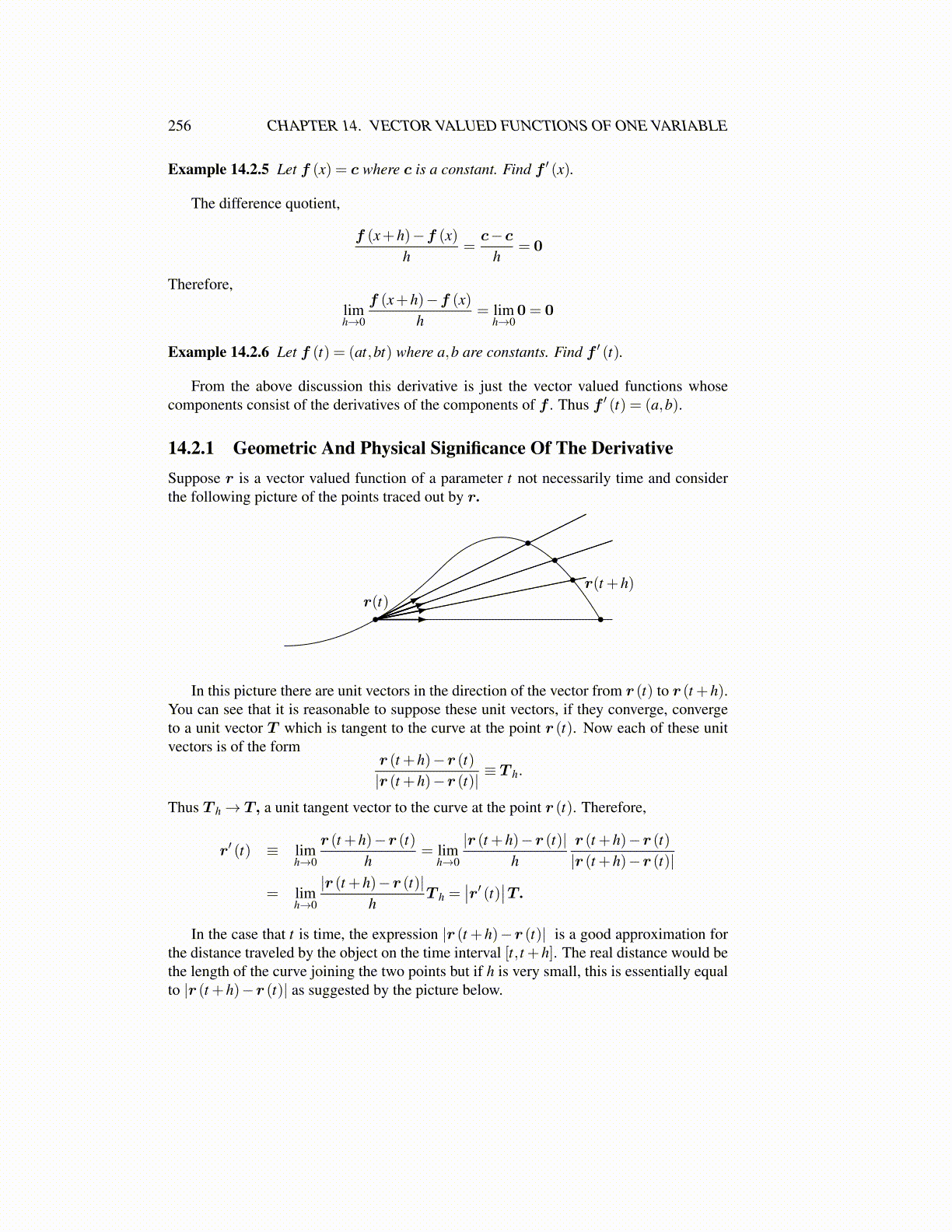
256 CHAPTER 14. VECTOR VALUED FUNCTIONS OF ONE VARIABLE
Example 14.2.5 Let f (x) = c where c is a constant. Find f ′ (x).
The difference quotient,
f (x+h)−f (x)h
=c−c
h= 0
Therefore,
limh→0
f (x+h)−f (x)h
= limh→0
0= 0
Example 14.2.6 Let f (t) = (at,bt) where a,b are constants. Find f ′ (t).
From the above discussion this derivative is just the vector valued functions whosecomponents consist of the derivatives of the components of f . Thus f ′ (t) = (a,b).
14.2.1 Geometric And Physical Significance Of The DerivativeSuppose r is a vector valued function of a parameter t not necessarily time and considerthe following picture of the points traced out by r.
r(t)r(t +h)
In this picture there are unit vectors in the direction of the vector from r (t) to r (t +h).You can see that it is reasonable to suppose these unit vectors, if they converge, convergeto a unit vector T which is tangent to the curve at the point r (t). Now each of these unitvectors is of the form
r (t +h)−r (t)|r (t +h)−r (t)|
≡ T h.
Thus T h→ T, a unit tangent vector to the curve at the point r (t). Therefore,
r′ (t) ≡ limh→0
r (t +h)−r (t)h
= limh→0
|r (t +h)−r (t)|h
r (t +h)−r (t)|r (t +h)−r (t)|
= limh→0
|r (t +h)−r (t)|h
T h =∣∣r′ (t)∣∣T.
In the case that t is time, the expression |r (t +h)−r (t)| is a good approximation forthe distance traveled by the object on the time interval [t, t +h]. The real distance would bethe length of the curve joining the two points but if h is very small, this is essentially equalto |r (t +h)−r (t)| as suggested by the picture below.